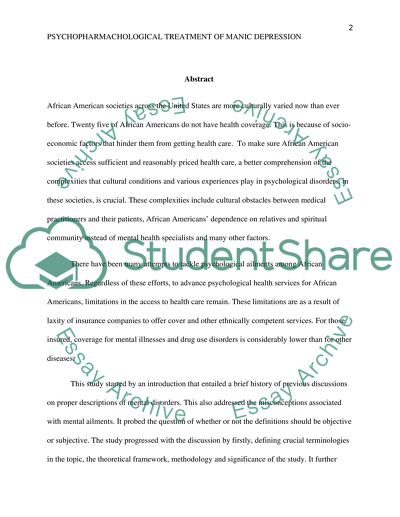Cite this document
(“Psychopharmacological Treatment of Manic Depression in African Research Paper”, n.d.)
Retrieved from https://studentshare.org/psychology/1395497-psychopharmacological-treatment-of-manic
Retrieved from https://studentshare.org/psychology/1395497-psychopharmacological-treatment-of-manic
(Psychopharmacological Treatment of Manic Depression in African Research Paper)
https://studentshare.org/psychology/1395497-psychopharmacological-treatment-of-manic.
https://studentshare.org/psychology/1395497-psychopharmacological-treatment-of-manic.
“Psychopharmacological Treatment of Manic Depression in African Research Paper”, n.d. https://studentshare.org/psychology/1395497-psychopharmacological-treatment-of-manic.


